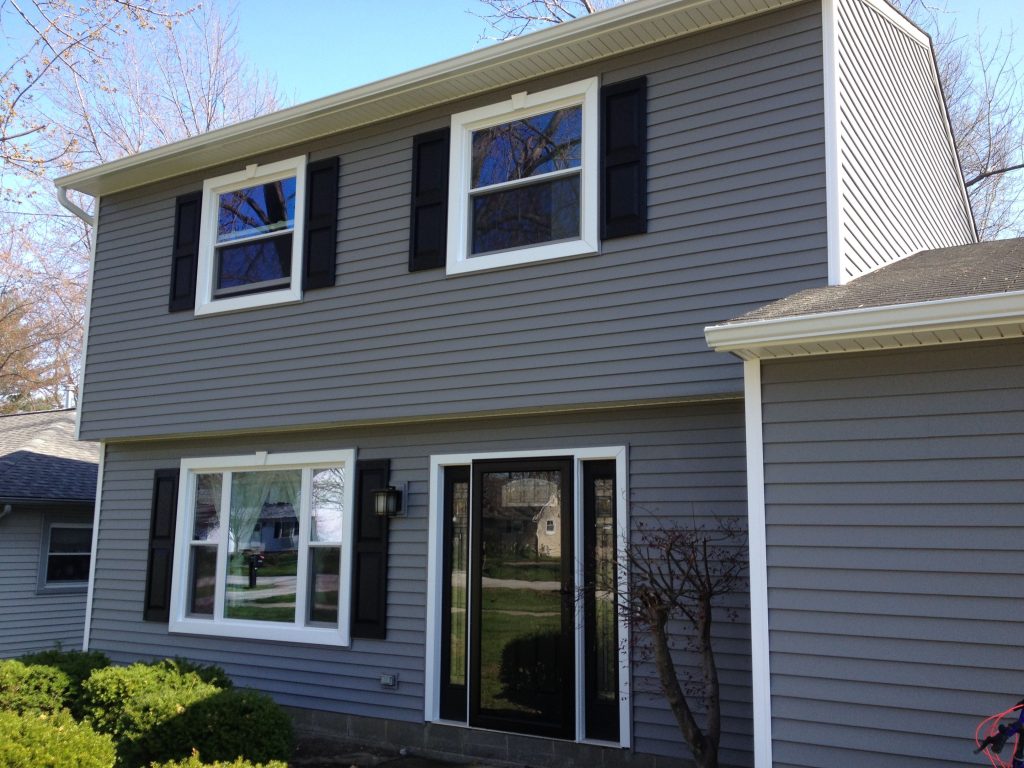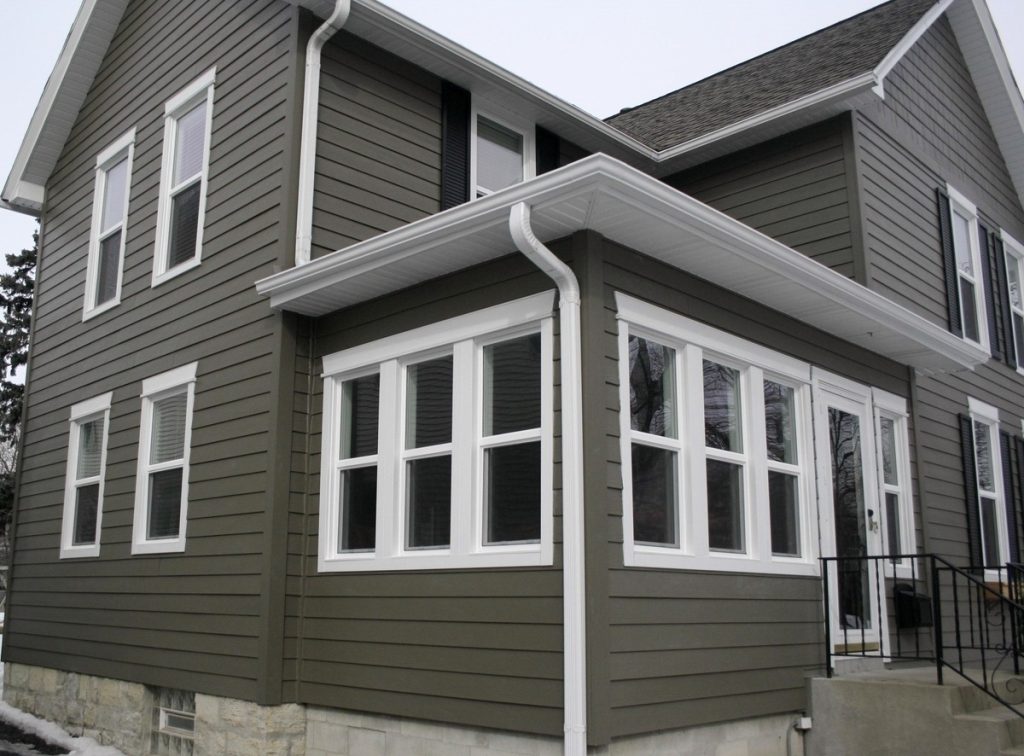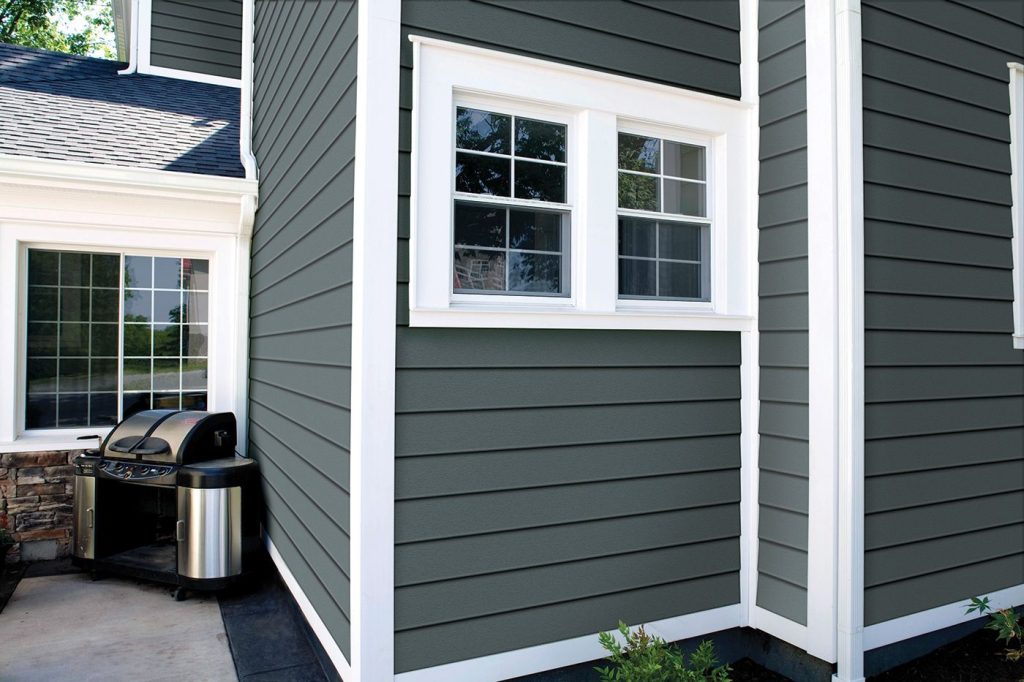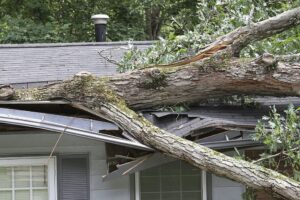Choosing the right siding for your home is a big decision. Not only does siding play a significant role in curb appeal, but it also affects durability, energy efficiency, and maintenance. Vinyl and fiber cement are two of the most popular siding materials, each with unique advantages and some drawbacks. If you’re wondering which is right for you, this guide covers everything you need to know about vinyl and fiber cement siding to make an informed decision.

1. Introduction to Vinyl and Fiber Cement Siding
Vinyl Siding
Vinyl siding has been a popular choice for homeowners for decades, primarily because of its affordability and ease of maintenance. Made from polyvinyl chloride (PVC), vinyl siding is lightweight, comes in various colors, and requires minimal upkeep. While it originally had a reputation for looking “plastic,” innovations in design and texture have made modern vinyl much more attractive and versatile.
Fiber Cement Siding
Fiber cement siding, on the other hand, is a more recent option that has gained popularity due to its durability and aesthetic appeal. Composed of cement, sand, and cellulose fibers, fiber cement mimics the appearance of natural wood while offering more resistance to weather, pests, and fire. Fiber cement siding is heavier and typically more expensive than vinyl, but its benefits often make it worth the investment for many homeowners.

2. Durability and Weather Resistance
Vinyl Siding Durability
Vinyl siding is relatively durable and can withstand moderate weather conditions. However, it is prone to damage from extreme temperatures. Intense heat may cause vinyl siding to warp or melt, and extremely cold weather can make it brittle, increasing the risk of cracking. Vinyl siding also doesn’t fare well in high-impact situations, such as hail or flying debris.
Fiber Cement Siding Durability
Fiber cement is exceptionally durable and performs well in extreme weather conditions, including high winds, heavy rain, and intense heat. It doesn’t warp or melt and is less likely to crack in cold weather. Fiber cement is also resistant to termites, woodpeckers, and other pests that can damage wood siding, making it a more durable option overall.
Verdict: Fiber cement siding has the edge in durability, particularly in areas with extreme weather or pest issues. Vinyl can hold up well in mild climates but may not last as long in harsher environments.
3. Maintenance Requirements
Vinyl Siding Maintenance
One of vinyl siding’s biggest selling points is its low maintenance requirements. It doesn’t need painting, sealing, or frequent upkeep. A simple cleaning with soap and water once a year is usually enough to keep it looking fresh. However, vinyl siding can accumulate dirt and mildew over time, especially in humid climates, so regular cleaning is recommended.
Fiber Cement Siding Maintenance
Fiber cement siding requires more maintenance than vinyl because it needs to be painted every 10-15 years. While it is resistant to rot and pests, the paint finish can fade or peel over time, requiring touch-ups. Cleaning fiber cement siding is also easy, but it’s essential to avoid harsh chemicals that could damage the finish.
Verdict: Vinyl siding is the better choice for homeowners looking for minimal maintenance, while fiber cement siding requires a bit more upkeep, especially when it comes to repainting.
4. Aesthetic Appeal and Customization
Vinyl Siding Appearance
Vinyl siding comes in a wide range of colors, textures, and styles, from classic lap siding to modern board-and-batten designs. Manufacturers have improved vinyl’s appearance, creating textures that resemble wood grain, giving it a more authentic look. However, vinyl can’t be painted, so you’re limited to the color you choose at installation.
Fiber Cement Siding Appearance
Fiber cement siding is highly regarded for its natural, wood-like appearance. It can be painted any color you choose, giving you the flexibility to update your home’s exterior whenever you want. Fiber cement also comes in various textures, such as smooth, stucco, and wood grain, making it easy to achieve a custom look that enhances your home’s architectural style.
Verdict: Fiber cement wins in terms of aesthetic versatility. If you want the option to change your home’s color over time, fiber cement is the way to go. Vinyl siding offers variety but lacks the flexibility to repaint.
5. Cost Considerations
Vinyl Siding Cost
Vinyl siding is generally more affordable than fiber cement. The cost of materials and installation for vinyl is typically lower, making it a popular choice for budget-conscious homeowners. Depending on your region, the cost of vinyl siding can range from $3 to $7 per square foot, including installation.
Fiber Cement Siding Cost
Fiber cement siding is more expensive, mainly due to its composition and the labor-intensive installation process. On average, fiber cement siding costs between $5 and $12 per square foot, including installation. While the upfront cost is higher, fiber cement’s durability may lead to fewer repairs and replacements, balancing out some of the initial investment over time.
Verdict: Vinyl siding is a more budget-friendly option upfront. If you’re looking for an economical solution and are less concerned about long-term durability, vinyl is a practical choice. Fiber cement’s higher cost might be worth it for homeowners prioritizing long-term durability and aesthetics.
6. Environmental Impact
Vinyl Siding Environmental Considerations
Vinyl siding has faced criticism for its environmental impact. The production of PVC releases harmful chemicals into the environment, and vinyl siding isn’t biodegradable, making disposal a concern. Some manufacturers now offer recycled vinyl siding options, but overall, it’s not as eco-friendly as other materials.
Fiber Cement Siding Environmental Considerations
Fiber cement siding is a more sustainable choice. Its production requires fewer fossil fuels than vinyl, and it has a longer lifespan, reducing the frequency of replacements. Although it’s not biodegradable, fiber cement is often considered a greener option due to its longevity and lower environmental footprint.
Verdict: Fiber cement is the more eco-friendly option. For homeowners concerned with sustainability, fiber cement siding is the clear winner.
7. Installation Process
Vinyl Siding Installation
Vinyl siding is relatively easy to install, and most contractors are experienced with it, which keeps installation costs low. The panels are lightweight, making the process quicker and more affordable. However, improper installation can lead to issues like buckling or warping over time.
Fiber Cement Siding Installation
Fiber cement siding is more challenging to install due to its weight and rigidity, requiring specialized tools and expertise. This results in a longer installation process and higher labor costs. However, when installed correctly, fiber cement siding is exceptionally durable and less prone to issues.
Verdict: Vinyl siding is easier and cheaper to install, making it a more accessible option for many homeowners. Fiber cement siding requires professional installation, which can add to the overall cost.
8. Fire and Pest Resistance
Vinyl Siding Fire and Pest Resistance
Vinyl siding is somewhat resistant to pests, but it can melt in high heat or flame, making it a less ideal option in fire-prone areas. While vinyl won’t ignite, it can contribute to fire spread if exposed to flames, which is worth considering for those living in regions susceptible to wildfires.
Fiber Cement Siding Fire and Pest Resistance
Fiber cement is highly fire-resistant and does not contribute to fire spread, making it a popular choice in wildfire-prone areas. Its composition also makes it resistant to pests, including termites and woodpeckers, giving it an edge over vinyl in terms of durability and safety.
Verdict: Fiber cement siding is the best choice for fire and pest resistance, providing peace of mind for homeowners in vulnerable areas.
Conclusion: Which Is Right for You?
Both vinyl and fiber cement siding have their strengths, and the best choice depends on your priorities. Vinyl siding is affordable, easy to maintain, and comes in various styles and colors, making it a practical choice for many homeowners. If you’re on a budget and live in a mild climate, vinyl siding may be the ideal option.
Fiber cement siding, however, offers superior durability, fire resistance, and environmental benefits. Its customizable aesthetic and long lifespan make it worth the investment for homeowners looking for a high-end appearance with added protection against the elements.
In the end, consider factors like climate, budget, and maintenance preferences. If you want an economical solution with low maintenance, vinyl siding could be the right choice. But if you’re looking for long-term durability, customization, and better resistance to the elements, fiber cement siding might be the better investment.




